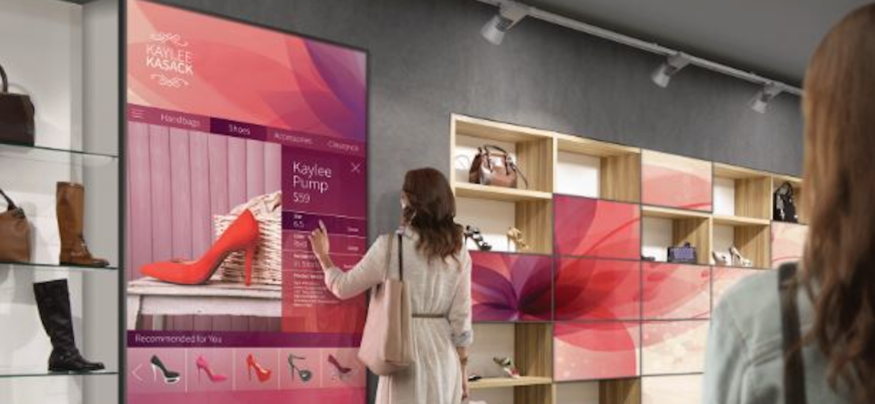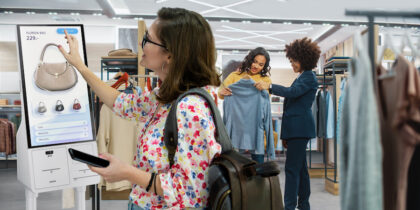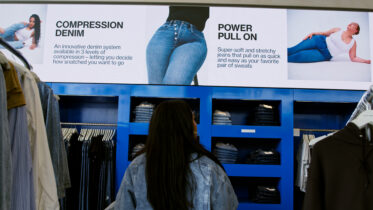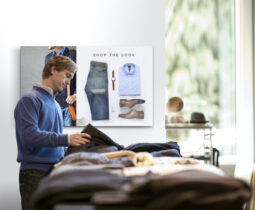Increasing customer engagement is a priority for retailers, and the Internet of Things (IoT) is creating a new realm of possibilities for these interactions. As the number of customers who carry smartphones continues to increase, retailers are looking for ways to tap into this technology to provide a more personalized experience. With a new combination of retail technology, which includes beacons, radio frequency identification (RFID) and smart digital displays, retailers are driving the next generation of location-based marketing programs that aims to create more personalized and intimate shopper relationships.
One-to-one customer relationships are closer to reality than ever before. What’s the catalyst driving these interactions? The evolution and proliferation of the smartphone. In the United States alone, 182 million consumers currently own a smartphone, according to a 2015 report from Boston Retail Partners. In the retail setting, these consumers are using their smartphones to read product reviews, compare prices and make purchase decisions. The key to engaging the customer in the buying process is to reach them through their smartphones.
Using In-Store Retail Technology
In recent years, several large retailers have begun experimenting with beacon technology and smartphones to create location-based initiatives. Retailers are deploying low-power, Bluetooth-enabled beacons in their stores to detect the physical locations of smartphones. As shoppers move through an aisle or between departments, the retailer can display advertisements or coupons for individual shoppers based on the products in their proximity.
While marketing efforts based on geo-location and beacons are changing the relationship between retailers and customers, retailers must remain mindful about how they interact with shoppers. “We’re still at the very early stages of one-to-one communications,” said Adebayo Onigbanjo, director of marketing at Zatar, a leading IoT cloud service from Zebra Technologies. “While beacon interactions spur notifications sent directly to consumer phones, retailers must be careful to send customized messages in an appropriate way.”
Bring the IoT Into the Mix
The number of IoT-connected devices will reach 38.5 billion in 2020, a 285 percent increase from 13.4 billion in 2015, according to a 2015 report from Juniper Research. Such devices include smartphones, tablets, smart signage and wearables. Where the rubber meets the road, however, is not only how these devices are connected, but how they communicate, analyze and share their data.
That said, it’s clear why the IoT is becoming a priority for retailers. Once collected, actionable information can be applied toward creating an engaging customer experience. For instance, using data from a smartwatch, retailers will be able to gain insight into how long a customer stands near a product, or the speed at which they wander down the aisle.
Zebra Technologies is illustrating this process through its work with the National Football League (NFL). Almost four years ago, the company created a program with the NFL that embedded RFID tags within player uniforms to track their activity on the field. By pulling actionable data from the active tags, NFL team owners, managers and coaches could push findings to broadcasters, creating “next-generation statistics.”
Based on early successes, it didn’t take long for Zebra through its Zatar initiative to understand the emerging role of the IoT in the customer experience. Thanks to its ability to drive data into the cloud to be merged with other data, RFID technology was quickly considered one of the building blocks of early IoT projects. By building out innovative cloud services, Zatar was ready to expand the power of the IoT in the retail industry, which meant including beacons in the mix.
Creating an Engaging Customer Experience
To make in-store digital signage even more interactive, savvy retailers are integrating beacon technology to detect users with Bluetooth-enabled smart devices as they approach the digital displays. By adding a third element that utilizes RFID technology, brands can further optimize content that is shown on the screen.
Zatar and Samsung are illustrating how retailers can create an engaging customer experience by affixing RFID tags within labels on wine bottles. When a customer carries a RFID-tagged wine bottle past a dedicated reader, the tag prompts a nearby digital sign to serve up customer reviews, merchandise details and even food pairings.
This next level of customer service aims to enhance the relationships customers have with their retailers. “Shoppers want to be personally targeted and engaged,” said Onigbanjo. “The goal is to know your shopper and to use IoT technology to display relevant content that prompts shoppers to take action.”
As the IoT gains traction across the industry, retailers are reevaluating the role of connected devices. By merging a variety of solutions, these companies may finally achieve their goal of fostering intimate, one-to-one shopper relationships.
How do you envision beacons, RFID and other new location-based technologies changing the shopping experience in the next five years? Make your bold predictions in the comments below.







